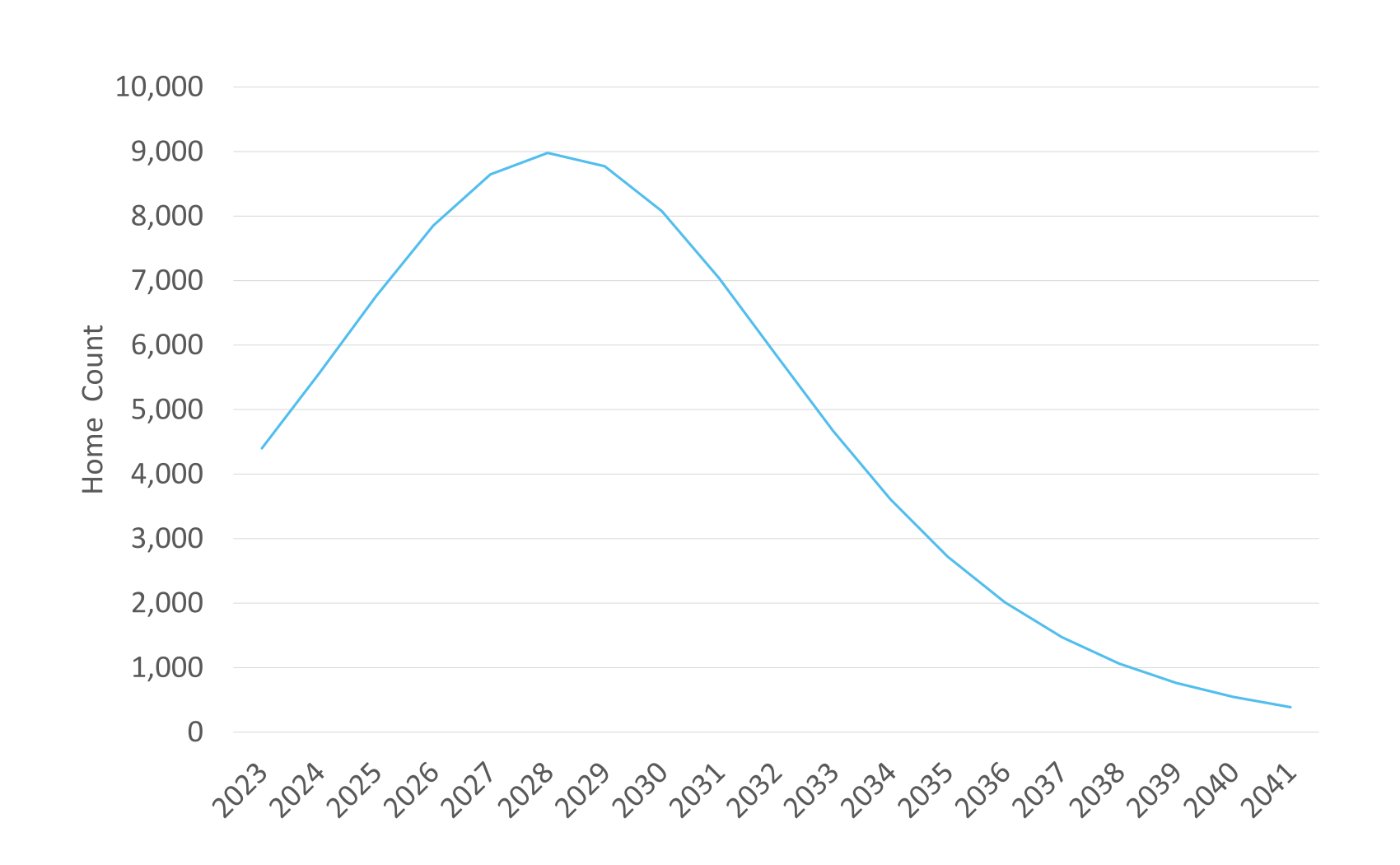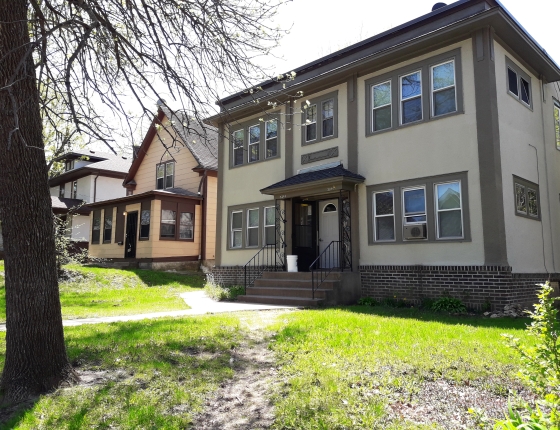An analysis from Center for Energy and Environment (CEE) shows that weatherizing and electrifying one-to-four-unit residential buildings is a feasible pathway to meet the City of Minneapolis’ science-based climate emissions targets. Electrification, or the process of transitioning the equipment in buildings to electrically powered options, has huge decarbonization potential due to the greening of the grid. Xcel Energy has committed to reduce carbon emissions from electricity generation 80% by 2030 and is now required to be carbon free by 2040 due to the recent passage of the 100 Percent Clean Energy by 2040 bill.

Even today, homeowners can ensure their electricity is carbon-free through onsite solar and renewable energy subscriptions. These developments make electricity an increasingly cleaner fuel type for homes compared to continued use of equipment powered by natural gas. By reducing the need for energy through home weatherization (insulation and air sealing), and transitioning equipment to high efficiency electric options, it is possible to achieve the City’s ambitious climate equity goals.
While there is a pathway forward, the pace of work and scale of investment is significant. Whole home weatherization and electrification projects will need to increase to thousands per year to meet the City’s goals. As seen in Figure 1, 4,400 whole-home projects would need to be completed in 2024, scaling to nearly 9,000 in 2029. The total upfront cost of that work is between $2.12 billion and 2.73 billion over the next 20 years, with the total for the average home ranging between $24,000 and $30,900. This is roughly equivalent to 8% of the assessed value of the building stock.
CEE published its full analysis, stakeholder process, findings, and recommendations in a full report. The key takeaways include the following.
-
Combined, weatherization and electrified heating accounts for 75% of the decarbonization opportunity for one-to-four-unit residential buildings. A home’s carbon emissions can be significantly lowered if it is adequately weatherized and has a high efficiency electric heating system installed to offset, or replace, a natural gas heating system.
-
Weatherization is critical to space heating electrification and to keep costs low. Due to the old housing stock in the city, there is a widespread lack of adequately weatherized homes. Addressing unmet weatherization needs will not only save energy by itself, but also make any future heating electrification significantly more affordable and effective.
-
Air source heat pumps are the most feasible high efficiency electric heating system currently available. A range of electric heating system technologies, such as ground source heat pumps and air-to-water heat pumps, were studied in the analysis. Future possibilities, such as renewable natural gas, were also considered. CEE determined that air source heat pump technology is the most cost-effective, commercially available option that can be deployed at scale quickly.
-
Dual fuel heating systems can control for utility bills and strain on the electric grid. A dual fuel heating system incorporates both a heat pump and a natural gas furnace or boiler. Depending on the outdoor conditions, the heat pump or the furnace can provide heat. This flexibility between electric and natural gas equipment offers residents, particularly to those who are cost-sensitive, a valuable tool to respond to rate changes and keep energy bills low. A decarbonization strategy featuring dual fuel systems also lessens the urgency for costly electric grid infrastructure upgrades. During times when homes heated with heat pumps would require more electricity, such as during a severe cold snap, the electric utility could switch dual fuel homes to the natural gas system to control demand.
-
Workforce development needs to ramp up very quickly. Thousands of projects need to be completed each year to keep the City on track to meet its goals. A workforce of nearly 1000 electricians, insulation contractors, mechanical contractors, and other trades are needed to complete the heavy volume of work required. This workforce does not currently exist. In fact, the region is currently facing a general shortage of contractors. Workforce development in critical trade areas will be vital.
-
Advancing equity and cutting carbon can work together. Prioritizing investment in historically underserved areas to fully fund electrification projects can save residents money on energy bills while increasing quality of life. This investment is also effective as a targeted decarbonization strategy, as areas like the Southside Green Zone have some of the oldest and least weatherized buildings in the city. Additionally, workforce development efforts can be focused on marginalized communities to advance the equitable economic benefits of decarbonization.
-
It is currently possible to electrify and keep energy bills stable, but work is needed to maintain long-term affordability. Special utility rates, such as all-electric and dual fuel rates, can be used today to make the increased electricity use from electrifying affordable for residents. This situation may not last as rates change and more electric infrastructure is built. Collaboration with utilities and the Public Utilities Commission to secure favorable rates and policies can help keep electrification affordable for residents in the future.
The City of Minneapolis’ decarbonization goals are ambitious, but CEE’s analysis shows that they can be met with weatherization and available electrification technology. By strategically targeting investment to fund high-impact and equitable projects, growing the workforce, and working with utility partners, the City can achieve a first-of-its-kind win for current and future generations. You can read the full report and list of recommendations at the link below.
"What does it cost to electrify a cold climate city?" - Zoom Webinar
